The Secret To The Frame - Training Thursday Replay
The real secret to the frame, what it takes to get there and what can slow your horses progress
Uncover the real secret of the working frame, what it takes to get there, and what can slow your progress.
Replay from the Facebook Group IMPROVE YOUR RELATIONSHIP WITH YOUR HORSE #TrainingThursdayLive session 27/2/2020. Join the Facebook Group HERE if you would like to submit your own training request.
5 Tips To Improve Your Dressage Test Scores
We all want to get that amazing score in the dressage test, right?
That score that shows not only how good we are, but how amazing we know are horse is as well.
We all want to get that amazing score in the dressage test, right?
That score that shows not only how good we are, but how amazing we know are horse is as well.
But with so much that goes into the scoring process, what can you do to reach those lofty heights?
Of course, developing your horse correctly through the self carriage process and beyond is going to avoid furture limitations (want to learn how you can apply this to your horse? Click here to learn more about our Green To Self Carriage Course).
You can also check out these tips that Katie prepared for you below!
1. Forwardness
Riding your horse forward and bold creates straightness.
Think of it like peddling a bike. If you don’t peddle fast enough your bike gets the wobbles and you can’t straighten that with the handle bars you have to peddle harder. Once you’re peddling hard enough the bike balances out.
You can also think about it like the difference between walking somewhere and dawdling or walking with purpose. When you walk with purpose you walk straight to your destination. If you’re dawdling and not in a hurry your line tends to drift, go off course and come back again.
2. Let your horse make the mistake (in training)
When you introduce your horse to a new exercise you will give your horse lots of support and balance to get them understanding their job.
After a while they know what they are supposed to do but we still do everything for them. What we end up doing is maintaining pressure while our horse is cooperating so what incentive do they have to cooperate?
Let go, let them make the mistake and reapply the pressure to correct the mistake - but let them make it first!!
This is how we cue train. We also want our horse to remain doing the task asked until we change the ask. This allows us to compound the aid and ask more complex cues of them. If you are using all your aids to ask for just the simplest ask like maintain forwardness, you have no other aids to communicate other things you need like bend, yield, transition etc.
3. Engagement
The reason why engagement is so hard to understand is because of the way it is taught.
At best it is taught by inside leg to outside rein; at worst to hold the horses head down and tap or drive the hindquarters through. When taught at the worst, it creates a rotation of the pelvis which is false engagement and stresses the horses back.
Engagement is not the horses hind quarters coming under more (although that is the end result) but a transitioning of weight from forehand to hindquarters that creates deeper flexion through the hocks and haunches. They squat deeper into the movement.
4. Independent seat
There was a long time of my riding career where I was naïve enough to think my position didn’t really affect my horses potential.
It is however, the most limiting factor in our horses potential.
Dressage is the art of dance between horse and rider. It doesn’t matter how good a dancer your partner is if you don’t have the posture and dancing skills yourself. We know this from watching dancing with the stars.
5. Accuracy
Accuracy is THE easiest way to improve your test results. It is the first thing you are marked on and the easiest thing to mess up.
Preparation, looking ahead and knowing your test is key allow with being able to actually break down the geography of the movements.
Would you like to improve your accuracy in your test? Download our free guide here!
Stop Your Horse Pulling On The Bit
What creates a horse that pulls on the bit and how you can work wit your horse to correct it.
How do you get the horse to stop pulling on the bit?
Horses that pull on the bit or through the bit haven’t been taught how to accept bit pressure and what to do with contact. There is also a good chance that their neck is being held uncomfortable tight.
Believe it or not the instinctive response for the horse to give to bit pressure in their mouth is to pull against it, not follow it or give to it.
Have a feel of it yourself. The pulling of the bit on the head and mouth puts them off balance so instinctively they want to pull against it. That’s why when breaking, we want to move quickly from using the reins to control the horse to using the reins to communicate with the horse. When our reins are used to control the horse it becomes an argument of who is stronger. This is an argument a horse will win every time on the ground let alone in the saddle. I prefer not to get into this argument in the first place.
The first thing horses need to learn is how to accept pressure and look for the release of pressure.
That allows us to set our horse up for seeking the right answer and not just doing as their told. This allows us to start working with cue training. The horse learns that if 2 reins contact is applied to their mouth, if they stop and stand still that pressure goes away. If 1 rein is applied and they follow the rein it goes away.
It is when the horse is either not taught this or the rider does not ride this way that the horse will start trying to grab the bit and drag the rider around to the things he wants to do. Once the horse knows he can get out of work doing this, it becomes very tricky to fix. You basically have to ride without rein contact and show them they don’t get out of work that way.
The other time horses can start grabbing and pulling the bit is if you are hold their neck too short.
We want a short body and a long neck. We want to encourage our horses to reach their noses out and find contact. A short neck jams up their movement and gets them feeling uncomfortable.
Exercises to improve grabbing the bit:
Correct use of pressure & release to show the horse how to respond to bit pressure correctly;
Riding without contact and on a long rein;
Transitions;
Flexion at the poll;
Rein back over a pole.
You can learn how to apply correct bit pressure and acceptance of the bit, while developing your horses musculoskeletal frame in a way that supports longevity and success, Equestrian Movement is in the process of finalising the Green to Self Carriage Course. Sign up to learn up it’s release here!
How strong is your bond with your horse? Take our quiz!!
Take our quiz and see what you might need to work on to improve the relationship you have with your horse.
Does your horse rear when it is napping?
How do you manage a horse that rears when napping?
“My horse rears when it’s napping - what can I do?”
It was a question I was asked recently and thought it would be a good idea to discuss it.
First though, let’s clarify what napping is for those of you unfamiliar with the term.
Editor’s note: I assumed napping meant snoozing, and said to Katie “big surprise - they are probably startling their horse…” —- SARAH
Napping is when your horse is reluctant or refusing to move forward in the direction your want it to go. It is different to spooking, which is when a horse is genuinely scared, startled and trying to bolt reactively.
Napping, and then rearing during these periods, is often put down to bad behaviour. But let’s look a little deeper at the cause, and why they may rear as a response to your actions.
FIRST DO NO HARM
At Equestrian Movement, our first rule of thumb in working with our horse is first do no harm.
So before you go down the path of training and correcting ANY behaviour, rule out all possible reasons for your horse doing this.
Pain, muscle and gastrointestinal,
Saddle doesn’t fit/pinches,
Rubs or galls from the girth or saddle,
Old injuries etc.
If you know for certain your horse is rearing to get out of work then we can consider how to work with them.
REARING TO GET OUT OF WORK
Rearing without a good reason usually starts because they used to have a good reason and it went away, or they are lacking confidence. Once they establish that this behaviour gets what they want (i.e. no more work), they will continue it.
So they may rear because you are walking them away from the stable. If you were to get off take them back to the stable and feed them, they will learn that if they rear you get off, turn them out and feed them.
It is ok if you get off but make sure that if you get off the work continues. So if you are leading them away from the barn and they rear to get you to take them back to the barn, you can dismount but continue leading them away from the barn on the ground and work them through the argument on the ground until you get a yes and then remount. Not until they are walking sweetly away from the barn without argument (whether on the ground or in the saddle) do you turn them back toward the barn and feed and turn out.
JAMMED SHOULDERS
Another reason why horses can just stop and rear is because they are jammed through the shoulders. Basically their neck, chest, shoulders or back get tight and pull resulting in them feeling like the only option they have is to go up.
This horse needs a lot of topline conditioning to maintain forward thought and forward while being ridden. Canter transitions and canter poles can really help. It most often comes up as the horse is learning to develop throughness in a working frame. So the hindquarters are coming under and engaging but they don’t know how to extend through the shoulder to move their forehand out of the road and they rear.
Using shoulder mobilising exercises like turn on the hind quarters, leg yield and shoulder fore in combination with teaching them how to transfer their weight onto the haunches and maintain forwardness all help with teaching them how to use their body so they don’t feel jammed.
If at any stage you feel uncomfortable or unsafe with your horse we recommend you work with a professional trainer to help.
7 Relaxation Cues Your Horse Is Communicating To You
What are the cues your horse is showing that it is relaxing?
Relaxation cues are a tell tale sign of our horses lowering their guard around us and letting us in.
It also helps to tell us how much pressure to put on our horse, when to back off and let them process the pressure and when our horse is no longer coping.
How clear these cues are vary on age, previous experiences and breed.
Typically speaking heavy horses (like clydies and percherons) can be harder to get relaxation cues from because it can be harder for them to feel stressed compared to a thoroughbred. Lets face it, just being alive is a stress to some thoroughbreds. Younger horses and natural people pleasers that get stressed more easily may show more obvious relaxation cues but it can also take them longer to relax. Horses that have experienced past traumas or that live alone may struggle with relaxing at all and can be hard to elicit relaxation cues from.
Some relaxation cues to look for:
Quivering lower lip
Lowering their head
Shaking out their head, wiggling their ears and lowering their head (different to head shaking and tossing when stressed or frustrated)
Muscle twitches
Full body shake
Lying down
Mouthing, licking and chewing
Some signs of tension:
Holding and bracing through their body
Stomping their hoof
Head lifted and lifts against pressure
Tight through the ears and jaw
Looking for relaxation and tension cues from my horse has been a game changer in our working relationship. It helps me address the no before he even says it. What I hadn’t realised was he was stressed with me just going into the paddock with him. I guess not knowing what to expect and having to work. The tension cues would start with me just walking to the paddock.
Initially it took 20 minutes of just being quiet and still with my horse in the paddock before I started seeing relaxation cues. Once I realised this relaxation was the missing piece to starting to build a connection and relationship, I made these the point of my training sessions. I started prioritising these relaxation cues of all else and then worked towards connection. Now I get the same relaxation cues - the same ones that people would do join up for ages for with their horses - within minutes of standing quietly with my horse.
What Is "Trainability"?
And are you providing it for your horse?
Are you supporting your horses ability to be trained?
Trainability refers to the ability for your horse to process the education your are providing. It requires a willingness and desire to work together as you both progress.
It is unfortunate that many training techniques actually discourage “trainability” - although these techniques will continue to state that they get results.
I agree they can get results:
Sometimes that result is a horse that has been bullied into submission, and has no way of communicating his lack of understanding.
Sometimes that result is a horse that has been forced to shut down emotionally, because they are constantly exposed to adverse situations and then expected to not respond in any way.
Finally, sometimes that result is a horse that is deemed ‘unsafe’, ‘unsound’ or dangerous. Sometimes that result is another horse on the doggers truck.
It’s not always doom and gloom. Some horses come through traditional training programs and can do well.
But so many horse’s don’t thrive in traditional training methods - and neither do their owners.
This is why Trainability became such an importance focus for me, and it is why I will always put the concept of first do no harm in the fore-front of any work I do. It is why I work so closely with Katie - to give more horse owners the capability, knowledge and skills to change the world of their horse.
When we open our horses up to becoming trainable, we open them to a whole new world. A world that allows them:
To openly communicate with you, express their confusion or understanding to the task at hand;
To understand that we are the leader, but we are not going to punish them for something they didn’t understand, but will help them through until they do;
To feel confident and safe enough to be curious, instead of being reactive to new stimuli;
& to show their personality in a totally new light.
Even more than that, it teaches us, as people:
To better understand our horse;
Methods that we can apply to our horse regardless of education level;
& how to be a better horse person.
That is why Katie Boniface has put together the Holistic Horse Handling Program . It is a selection of exercises, activities and theory that shows you, step by step, how to work through the challenge of making your horse more trainable.
Let the way you train your horse reflect the love you feel. Sign up to Holistic horse handling program waitlist today
What Strengthening Your Bond Will Do For Your Horse
Did you know that herd structure plays a big part in the way we should bond with our horse?
Have you ever wondered why horses are herd animals?
I wouldn’t be surprised if you really haven’t given it much thought. They just are - right?
Or perhaps you think “they are animals of prey, it makes sense to have the advantage of numbers”.
And in a sense, that is true. But a herd offers so much more.
The structure of the herd incorporates:
An alpha that expects discipline, provides security and that they trust.
An alpha that they can ‘test’ to ensure they are being lead by the best.
Herd mates that they share affection with.
Herd mates that share companionship and will play together.
When it comes to OUR interaction with our horse, we need to spend time intergrating ourselves into a similar position of the alpha horse in the herd. By doing so, we can set ourselves the easier task of training and working with a horse that respects us, trusts us and will share affection and connection.
So what are the areas we work on with our bond?
Boundaries:
By establishing boundaries, we can reinforce manners and respect with our horse. And we don’t need to beat them back or bully them into submission to do so.
Affection:
Have you ever watched to paddock mates mutually grooming? Not only is it cute, it has the benefit of reconnecting and re-establishing bond through affection. We love our horses and want them to love us back, so when we practice exercises that encourage affection, our bond strengthens infinitely.
Adventure:
Taking a break from the regular work routine or home routine to take an adventure together is not only a lot of fun, but a great way to reinforce our leadership and to create a level of trust founded on the confidence that your horse knows you will help them process stimuli and keep them from danger.
Companionship:
Spending some time with your horse without expectations is an exercise that actually has a bigger impact on ourselves but still a large impact on your horse. It is also a great assessment of your horse’s expectations from you - their reaction to your presence in the paddock will point you in the direction of what needs more work.
Security:
We (should already be, I hope) providing the basic security for our horses physical well-being, but sometimes we neglect the emotional security. By taking the opportunity to support our horse through these times of emotional crisis, we result in a higher level of trust, more affection, and an extremely strong bond.
How do I stop my horse bucking?
What you can do when your horse is mid-buck
After going through this list, you hopefully have identified which kind of buck your horse does and therefore a better idea of how you will deal with it.
When it comes to learn how to ride a buck, the best thing that ever helped me was riding in an Australian stock saddle. If you know your horse is a bucker and not a rearer these are ideal because no matter how long your horse gets its head and how quick it hits the skids into the buck the wings of the stock saddle keep you in.
Not losing your balance and getting unseated by the buck is the first step.
As soon as your upper body is a little forward or a little out of the seat of the saddle it is very hard to recover from unless your horse decides to stop bucking. Once you have some control over your seat in the buck you have 2 options:
One rein sharp tug.
If your horse can get the weight on the rein you are in a far worse situation for pulling them up, so you want to only use one rein and it has to be a quick on off so the horse can’t get behind that rein either. This is often enough to deal with most kinds of bucks where the horse is carrying on a bit.
Ride the horse more forward.
If you have the space and can ride the horse more forward, the faster they are going the harder it is to buck. Once they stop bucking, allow them to stop as a reward for ceasing the bucks.
When our horses truly lose the plot the bucking becomes thrashing, rearing and falling over. Any of this is a serious sign that you need to figure out what is going on. Is your horse in pain, have they experienced a trauma they haven’t been able to process, is there something medically underlying the bucking. This kind of bucking is not just your horse having a go but they are truly genuinely upset about something and they can’t just be pushed or worked through. It needs to be dealt with by a professional.
Why does my horse buck? 7 Common Occassions & Their Cause
While a normal behaviour, it can be dangerous for us. Learn about the most common times horses buck and why they are doing it.
Horses bucking is a very normal and natural horse behaviour.
However, we don’t really want them doing it when we are handling or riding them because we can get hurt.
There are a couple of different types of bucking our horses can do as well. Just a little kick out in protest to your ask, through to a full out bronco ride that doesn’t stop until they get you off.
Knowing the type of bucking your horse is doing can help you to problem solve and understand what they need to not buck.
1. Bucking when mounting
If you are too scared to mount your horse because they take of bucking you will most likely need a breaker to work with your horse. There are a couple of reasons for this behaviour.
Poor mounting technique has meant that being mounted has hurt for them. Digging your toes into their ribs, twisting the saddle as you mount, pulling the saddle over and pulling and clambering your way up their back.
Sore back. The twist and the pull of climbing up into the saddle aggravates an already sore back
Girthy. If they are muscle sore around the girth, the way the girth pulls as you twist and pull yourself into the saddle can hurt
Saddle doesn’t fit
Memory of previous pain from being mounted
Poor initial experience of breaking. A horse doesn’t need to be bucked out to accept the saddle and rider. They do need to get used to moving with the restriction of the girth around the ribs and the rider moving and wobbling around on the their back.
Topline and their back not being conditioned to support the weight of the rider.
Thumping or sitting heavy into the saddle.
Any of these problems will also come up as you are just riding. For example the first few steps off in walk trigger a bronco outburst, the transition to trot, just a simple turn. Any time the horse unexpectable and unexplainably tacks off in a broncing fit these things need to be addressed.
2. Bucking when putting your heels in or touching the flank.
It is important that you know that the flank is a very sensitive area for the horse. It is literally where rodeo riders tie a rope to make a horse buck.
This is also the most common place for riders to swing their leg into when they lose their balance, especially in they are gripping with the knee. Swinging your heel into your horse flank and gripping can be an auto eject button on a lot of horses.
Being an unbalanced, bouncy rider on a green, novice horse or a horse that is even the slightest bit sore through their back, nervous, anxious horses and horses that are a little intolerant. It takes a very special horse to look after an inexperienced rider - that’s why a lot of riding school horses and trail horses are worth their weight in gold. They don’t react to unbalanced riders. Working on your core and riding independently of your horse is and important skill to develop as a horse riding that wants to care for their horse and to help kicking or bucking out.
3. Horse bucks when excited.
A horse that can’t control its emotions can’t control its behaviour.
We can often see this kind of bucking when we let our horse out for a big gallop or if other horses are loose galloping around and playing and our horse wants to join in. They can also buck on a gallop because they’ve lost their balance and trying to catch it. This one just takes time correcting to let our horse know what is appropriate under saddle and what isn’t.
4. Horse bucks into canter when asked to canter
If your horse only really bucks going into canter this is a pretty strong sign of them being cold backed or working hollow and tight through their back.
With the way the trot strides work in a diagonal pair, they can work with their head down in a frame and not properly warm their back up.
Because they canter has a naturally roundedness and lift through the back, if they’re back isn’t warmed up properly they will use the transition to canter to stretch their back and jump into it. If you warm up the canter on the lunge before you ride it probably won’t happen under saddle. The may also baulk or kick out after poles or jumps because this also encourages them to use their back.
5. Horse bucks when asked to move forward
Bucking when asking to move forward the horse has commonly established an aversion to leg pressure and gone sour on their working.
Spicing it up by hacking out, having them fit for their job and doing other groundwork exercises can help. Spurs will make it worse and the whip also usually makes it worse.
6. Horse bucks after jump
As with bucking into canter, horses that buck after the jump are generally cold backed and need their back well warmed up. They sometimes also do it if they are scared of the jump fill.
I have had some horses that only buck after a jump if they clip the rail, so that could be either frustration with themselves for touching it or giving themselves a fright.
7. Horse bucks on the lunge
This one I’m less worried about.
If my horse has some bucks in his system and needs to warm his back up, I want him to do it on the lunge and not in the saddle. I still don’t want them to be crazy and out of control, but I’m ok with them kicking their legs around a bit. If I have the right facilities and may also free lunge and let them have a good run and a buck if they really want to play, get the crazies out of their system or want a good stretch.
Once we have identified the when of the bucking, we can start to look deeper into the why, and then start to work on the how.
Stay tuned for the next blog to see how we can correct bucking behaviours!
Get Your Horse To Trust You In 6 Easy Steps
Let’s get into the nitty gritty of developing trust.
Does your horse trust you?
Getting your horse to trust you has very little to do with the horse’s behaviour itself - it is about whether or not you are trustworthy to your horse!
So what can we do to help solidify that trust?
Consistency
The biggest part, and probably the hardest part of all, is consistency. It doesn’t matter what we are doing, whether it is riding on a trail, mucking out a stall, or rugging up - you need to be consistent in WHAT you are asking and consistent in HOW you ask it.
This might mean spending some time analysing how you interact with your horse at different times. When you lead your horse to the mounting block, do you treat it differently than when you lead them to their feed yard? In that exact example, you will often have horses that will willingly push against you to get to their feed faster, but walk reluctantly to the mounting block. Do you correct both of these behaviours and expect the same movement?
2. Boundaries
To expect our horses to trust us, we must set them up for success. One of the areas that most horse owners tend to muck up is boundaries.
Boundaries mean that we have a clear personal space that we expect our horse to respect, and that space should only be invaded upon invitation.
When we let our horses push into us when they are nervous, but then expect them to not walk over the top of us when we lead them, we have not set up our boundaries correctly.
It might sound counter-intuitive (surely trust means they want to be closer?), but the respect and consistency we build with our boundaries exercise leads to a much higher level of trust.
3. Enocourage a Learningn Brain
How you handle yourself around your horse when times get difficult can influence how the trust develops. For example, how can your horse trust you if you yell at them for doing something that they either are unsure of, testing you with, or unable to do? How can your horse not be expected to get excited if you do?
Breathing and keeping your emotions stable, even when things are going to literal shyte, helps establish respect and trust.
4. Emotional Support
In the same way that we must manage our own emotions, we must help our horses deal with their own. This can be rather difficult in some of the ‘hotter’ breeds but still very important. When we show our horses a way of processing and learning that the scary objects are not as scary as first seen, they breath, look at us and start to understand that we are as trustworthy as we promise to be.
5. Breaking Up The Routine
While consistency is numero uno in all we should do, it shouldn’t mean all work and no play. A chance for adventures, playtime or even a change of scenery not only breaks the monotony of work life, it helps expose the horse to new scenarios to test and explore their trust in you, and work on further extending it.
6. Communication
Finally, communication is very important. How we communicate the commands, how the horse responds to those aids, how we listen when they are processing, how we identify when they are not processing, how they tell us when they move on - all essential for a stronger level of trust.
Breaking The Wheel - Why You Should Choose To Train Trainability
What makes Training Trainability so different to other horse training methods?
Do we follow tradition because that’s how it’s always been done?
Or do we challenge tradition and incorporate new training techniques that have been proven to not only work for horses but dogs, elephants, birds, dolphins, seals… And those are just the animals I am aware of.
If you are “doing all the things” and your horse can do all the tricks but you feel like there is still something missing, then Training Trainability is for you.
Our tradition-breaking perspective that we have incorporated into our training values, philosophies and principles is that horses are emotionally intelligent, sentient beings that should be valued as equals and not devalued to the status of a belonging.
We value our horses needs physically, mentally and emotionally over our riding goals, and encourage them to learn and willingly participate in their education so that our training and ridden sessions are not only a joy for us but our horses as well.
This does not mean we let our horses push us around and get away with being bold. In fact, we are the complete opposite.
One of our core values is that to have a strong, trusting relationship between horse and rider we need to show up as a strong leader, setting clear, consistent boundaries and following through on our asks. The thing that is different is how we set those boundaries and being clear and consistent so our horse understands what we want, what to expect from us and why.
Our goal in training is to give our horse a voice. Some say in their own training experience. Their education is happening for them, not to them. They are allowed to tell us if they are overwhelmed, frustrated, sore, confused, unsure, anxious and any other spectrum of emotion they may feel without being “pushed through”.
We offer other supportive strategies that first teach our horses how to process and move through these emotions and then tackle the challenges we set for them with confidence and trust in us to guide them through the unknown (which is obviously always full of scary monsters like flapping plastic bags and rustling trees).
What we are really truly looking for in our work with horses is not the 50c ribbon, the nod of approval from our peers or the accolades from the judges but the connection, emotional relationship and the peace that comes from creating a deep and powerful bond with our horses.
Because if all we wanted was the adrenaline rush of the ride without the emotions and intellect, we would ride motor bikes.
Are you ready to join the equestrian movement?
#jointheequestrianmovement
My Horse Is Leaning On The Bit!
Help! How do I stop it?
Help! How do I get my horse to stop leaning on the bit?
It was a question posed recently by one of my students, and inspired me to provide more information.
The short and simple of it is that a horse that is leaning on the bit is on the forehand.
They either haven’t learnt how to properly engage their topline and pull their forehand up by coming up into self carriage, or they are taking advantage of you not knowing how to ride up hill.
All green horses have to go through the transition of going from working on the forehand, pulling themselves with their chest and shoulders, pushing off of and out from the hind legs to transferring the weight onto the hind quarters and establishing relaxation, throughness and swing. It is a difficult transition for most horses to work through.
Most behavioural issues under saddle will pop up when the horse is learning this because it is so hard on them.
For the rider, you need to learn where your independent seat is and be able to ride your horse legs seat to hands. Any forward tip in your upright seat will result in putting your horse on the forehand.
It is important, therefore, that you aren’t gripping with your knees and your thighs and able to keep your pelvis rotated up. Griping with you knees and thighs rotates your pelvis down, tips your upper body forward and pivots you at the knee, pushing you away from the horse.
Some exercises specific to horses that lean are:
transitions,
rein back,
leg yield and
changes of frame, working from long and low and back up to working again.
This step is so important in our horses physical development and crucial to the continued development of self carriage and further. It is why I use the training methods that we have created into a self-paced online training program, that you can use to scale up and down as your horse develops and tailor the training to suit your skills and horse’s phase.
What to know when our Green to Self Carriage Program will be released? Click here!
7 tips to tell if your horse is on the bit
There is a special skill in identifying when your horse is ready to be on the bit.
How do you know if your horse is on the bit?
Understanding what riding on the bit means and encompasses (read more here), there are certain signs to watch out for.
When our horse is truly accepting the bit, working in self carriage with evenly developed haunches and topline, we have true frame and throughness, and the horse is working with relaxation and swing, we will begin to notice a few things:
The horse stands square everywhere and anywhere.
In the paddock when you catch them, when you tie them up at the stables to tack up, when you mount them, any time you halt when riding and most importantly when you dismount and untack. If they stand square at the end of the ride you know you have trained them evenly and balanced in their ride.
2. The horse tracks up.
The hooves of the hind legs step into the prints left from the front legs in trot. When the horse is tracking up we know they are moving over their back with relaxation.
3. The horse can lift its tail.
If our horse is lifting its tail and swinging lightly to the rhythm of the movement to work into contact, we know they are using and working over their back. If the horses tail is clamped down or swishing stiffly their back is tight, probably sore and they are rotating and twisting their pelvis under instead of transferring their weight into and sitting deeper into their haunches.
4. The poll is the highest point.
A horse that is not in self carriage but looks on the bit will break away at the third vertebrae instead of the poll, and actually be working behind the bit. When the horse is working on the bit their nose should be at 90 degree angle to the ground (on the vertical) or slightly in front of, depending on how far along the training scale they are.
5. Lightness.
The idea of the horse working with lightness confused me for a long time. I thought that their mouth should feel light, which resulted in me working them behind the bit. The bit should feel almost like they are pulling through the bit but that you can half halt and ask them to wait. The lightness is in the way they move. Like comparing my noisy, elephant steps with an elegant dancer. The dancer has learnt through poise, balance and engaging their core how to be light and graceful on their feet.
6. The horse is seeking the contact.
When you give your horse more rein they stay the same and reach for the contact. You can give the contact away all together and they work the same. When you take the contact up they come more together and elevated in their stride but don’t change in tempo, relaxation and ground coverage.
7. Your rein back works really well.
Part of getting your horse to work well in its haunches is a cue that gets them to transfer the weight into the haunches.
All of this is dependent on the correct development of your horse and your position when riding. To learn more about our training course that will help you develop on the bit correcly, click here.
How to ride "on the bit" correctly
Here is what you need to know to perform this task effortlessly.
We recently spoke about WHAT riding on the bit actually is (missed it? Read the blog here).
Now it is time to understand the underlying dynamics and conditioning we need to consider before putting it into action.
How to put my horse on the bit?
The horse being on the bit is a combination of:
establishing acceptance and willingness to follow bit pressure,
understanding how to communicate flexion without tensing the neck against the bit pressure,
and the conditioning for the horse to be able to hold the posture required for them to stay on the bit.
And I’ll give you a little secret for free:
On the bit has less to do with the arc of the neck and more to do with the flexion of the hocks.
The straighter the hocks, the straighter the back, the more resistance and pull you get into the bit. If you teach the submission to the frame aid without the hock flexion your horse will lack forwardness, throughness and impulsion. It will still be working on the forehand and will be working either behind the bit or heavy in your hand.
When you are truly & correctly working your horse on the bit, your aren’t controlling the angle of neck flexion, but instead the angle of hock flexion.
How to keep my horse on the bit?
Then keeping your horse on the bit has do with keeping them sitting into their haunches, hocks flexed.
This is why the conditioning is so important and why having your horse on the bit takes a while to develop and hold well with consistency. Our expectations is the difference between me going for a run and me going for a run lifting my knees. They need to learn the poise, posture and lightness of a dancer and then build the muscles to hold that extra effort for periods of time.
How to get my young horse on the bit?
If you’ve just got yourself a young horse and realised that they aren’t as soft and easy to ride as your dressage school master, you’re not alone!
In the naivety that was my youth I thought all horses knew how to work on the bit and the ones that didn’t were because the rider didn’t know how to ride. How wrong I was!
In fact so wrong that I’ve written a whole course on the skills and prerequisites a horse needs to be able to work on the bit.
There is a lot to cover with a green horse in establishing relaxation, balance and suppleness, understanding of the aids, work ethic. Also the depth of frame often required in entry level dressage by far requires movements of an educated horse, such as leg yield, shoulder fore and canter through simple changes.
To be working your horse on the bit at a competition you want to be training at least one level higher than you are training. Most professional riders you will compete against will be training 2 levels higher.
To teach a green horse to work on the bit, we believe it is important that you as a rider are educated in riding true self carriage and not just pull the horses head down. For the horse, they need to develop the strength and power of the haunches to sit deeper and flex behind and engage their core so they can relax and swing over their back.
Once these 2 skills are developed, “on the bit” happens naturally and easily.
A little tip for free: green horses are great for eliciting the gaps in our own understanding and knowledge so you if are stuck on something, review the basics and see where you have missed a core piece of the puzzle in your own understanding and ability.
Riding on the bit requires skill and education, and can’t be achieved overnight. However, with the right effort and training, it will become natural and will look effortless flawless - bring those high dressage scores (as long as the judge likes your horse’s coat colour, of course!).
Riding On The Bit - The True Meaning
It is a term used often with poor understanding
Riding on the bit is a term thrown around quite a lot - but do we truly understand what it means?
Having our horse on the bit seems to be the gold standard we are rewarded for in the equestrian industry.
The biggest problem is that the term “on the bit” is so ambiguous. We see so many riders rewarded for having their horses head down without any of the self carriage pieces of the puzzle established - doing more harm than good to their horse.
There are a number of skills that both horse and rider need to learn to be able to work steadily and consistently on the bit. Let’s break it down”
What does riding on the bit even mean?
Firstly, your horse needs to accept the bit.
In dressage, acceptance of the bit means that the horse willing holds the bit in its mouth and follow and responds to cues from rein pressure. They can do this hollow, ie head high.
Not having acceptance of the bit is when you ask the horse to turn and they pull in the opposite direction, when you ask them to stop they keep running through the bit and if you ask them to back they pull through and walk through the bit.
Secondly, we start asking for flexion.
For true flexion, our horse is now being steered by our legs and body and our rein aids are light indications of which direction our horse should be looking in.
Flexion is the flexing of the neck muscles.
If we are using our reins to turn our horse will be counter balancing on that rein pressure and therefore flexing/tensing their neck against the rein and pulling/looking against the rein pressure. At this stage if flexion is asked of the horse and they aren’t steering from the legs they will suck behind the bit and fall out of the turn or circle easily.
Finally, your horse needs to be able to work in a true frame.
To truly have our horse on the bit, working over their back with elasticity, swing, impulsion, engagement and throughness, they need they’re postural, self carriage muscles well developed and the head comes down into a frame as an end result of self carriage.
Because movement is dynamic the “roundness” of the frame evolves and gets deeper and more elastic as you move into the harder dressage movements.
Understanding what riding on the bit means can help you avoid hurting your horse as you work through correcting deficiencies in Self Carriage.
Afraid to Ride (Diary of an Adult Rider) - Part 1
Afraid or nervous of progressing in your riding? Sarah shares some of her own nervous experiences as an adult student to the sport.
As a child, I had an incessant fascination of horses.
I have always loved animals, but horses were my obsessive go-to animal growing up.
And like many children, my family couldn’t afford one. So I managed my fixation by riding friends horses, collecting toy horses (I still have an impressive collection of Grand Champion Ponies hidden in the back of a wardrobe somewhere), and running around pretending to be a horse.
Yep, I was that annoying little girl.
As a teenager and young adult, I lost a lot of access to horses and began focusing on my other passions – other animals!
So it wasn’t until I was in my early thirties that I was reinfected with the horse-y virus, when a then stranger (but now best friend) generously invited me to her paddock to play ponies.
And then we both met Katie.
Now the virus has fully invaded my system with no chance of reversing the effects. And it’s contagious.
Learning to ride as an adult has both advantages and disadvantages to learning as a child:
Advantages:
I can drive myself - so can choose my own schedule and ride when I want (outside of those pesky responsibilities)
I have my own income and spending allowance (outside of those pesky responsibilities, again)
I have clearly determined my values and passions in life, and have learnt to balance them (most of the time)
I know that I want to ride and keep riding forever…
Disadvantages:
My body is no longer as flexible, so I have had to work hard to make my body adjust to the seat of riding.
My posture is TERRIBLE! And that’s not conducive to horse riding (but Katie has a great program to Improve Your Riding Posture in 3 Weeks - check it out!)
I don’t 'bounce' like I used to and I certainly don’t recover as fast as I used to.
I am an analytic over-thinker and I know a lot (that’s the point of studying, right?). I can think of 10 things in 2 seconds as to why something might not work the way it should – and in the beginning I was often wrong regardless.
Learning to ride as an adult has resulted in me learning the basics while attempting to fully grasp the advanced concepts at the same time because my adult brain simply refused not to – thank goodness for Katie!
Unfortunately it has also resulted in me being a little more nervous or timid of some progressive stages - which I will go into later.
Now I’m not saying that all adults learning to ride will experience this, or that kids learning now or adults that learnt to ride as children can’t experience the same issues, but this is how it has progressed for me and I’m sure there are a number of others out there in the same boat.
Being nervous (or afraid) has been a hindrance and blessing at the same time.
Some people may say “4 years training to ride and still not cantering? Are you nuts?” and I may even agree with them a little, but I also know that I have spent this entire time building trust in my riding, trust in my horses, developing the horses and perfecting my basics and instincts. I am a competent (not always confident) rider in walk and trot with “an instinctive knowledge and application of skill for what the horse needs to develop and work” (thanks for those kind words Katie <3).
And I wouldn’t change that for the world.
The Missing Element In Your Horse's Training
Can you identify what is missing with your hors'e’s training?
Have you ever considered what could be missing from your training?
A big marker used for identifying if you have a “good” horse is submission.
Submission, willingness and obedience are seen as signs of a “good” horse and it may even earn the horse the status of bomb proof. It comes up regularly as a quality marked for in competition and judged on by peers, trainers and instructors. Resistance, on the other hand, is seen as a quality of a bad horse that’s being naughty and acting out.
Many riders that do have a horse that can act out get confused when we get told our horse is being naughty.
We get upset when we are told our horse is too much for us.
We know deep down our horse is good and we love them with our everything, but we can just end up at our wits end not knowing how to simply get along with our horse.
Why can’t my horse just cooperate so we both can just enjoy each others company!?!
Maybe you’ve even googled:
How do I stop my horse from biting?
How do I stop my horse from throwing his head?
How do I stop my horse from bolting?
How do I stop my horse from bucking?
There have been many times in my riding career where I’ve just sat down on the floor and cried, ready to quit and just walk away because its all just too hard. It never lasts. I pull myself together and try again. And after 25 + years of trying again… and again… and again….
It is my belief that the most important element lacking in our training is giving our horse a voice.
Giving them permission to say no.
Giving them some control in what happens to them in their training.
Let them consent to working with you.
It’s the two way communication that is missing for our horses!
When you think about the crux of the issue, resistance is just the horse saying no, and willingness is the horse saying yes!!
In our industry, willingness is demanded from our horse. It is expected. And if that willingness isn’t given it is common practice that it is forced.
So a lot of the time the willingness of “good” horses I see isn’t given because they WANT to be participating in their training, it is given because they don’t want to experience the consequences and the type of discipline that gets used on them when they aren’t willing. This can lead to a horse being shut down, or learned helplessness, where the horse really resents what is happening to it but doesn’t see any other option. Alternatively, they can go the other way and become aggressive and some may consider dangerous.
Have you ever asked why your horse might say no?
We have. Here are just a couple of reasons:
Your horse doesn’t understand
Your horse is in pain
Your horse can’t do what you are asking
Your horse is uncomfortable
Your horse has an underlying medical condition that needs treating ie. Ulcers.
Your horses teeth need doing and are rubbing and cutting into the sides of their mouth
Your horses feed needs tweaking
Your horses tack doesn’t fit correctly
Your horse has rub areas, galls or sores from either not being properly groomed or tack rubbing from poor fit
Your horse is remembering or has an established learnt behaviour from a bad or poorly trained experience their past
Your horse is getting overwhelmed and doesn’t know how to effectively process its emotions.
These are just a handful of reasons that I have experienced for a horse saying no and therefore resistance.
When I first go out to a new assessment lesson, the most common reason for the horses behaviour being unmanageable - the reason I was called out in the first place - is because that horse has at least one if not more of the above reasons that it hasn’t been able to get across. The horse gets more frustrated and upset, it doesn’t feel heard or listened too and the behaviour escalates past what the owner can comfortably and safely manage.
The first thing I do is open a pathway of communication. I let the horse know I’m not going to make it do anything it doesn’t want to do and that I am there to listen to them. Once they know this, all of that “resistance” and naughty behaviour deescalates rapidly to just small, manageable yeses and nos. Once the horse feels listened to and heard, they don’t need or want to resort to the big dangerous behaviours that are really the big, loud nos. And it is then we can work through and address all of the reasons our horse is saying no.
This doesn’t mean that we allow our horses to bully us and push us around. We still maintain manners and expectations of how they should behave with us. The big difference is how we establish and maintain those manners and expectations we set. We give the horse the tools to say yes and no without it being a case of “them getting away with it” and them taking advantage of us next time.
Once we have ruled out all reasons for our horse saying no, only then can we start taking small steps towards getting a yes and rewarding the yes to encourage more yeses.
Once we have a small yes (this can be as simple as leading in halter in walk, sending them away at feed time or just putting the halter on), we slowly build the number of yeses but we maintain the horses right to say no. Over time we will get consistent, multiple yeses not because they are forced but because the horse enjoys the mental stimulation of learning, the physical stimulation of movement and the emotional stimulation of a dynamic and respectful relationship. The bonus being they can also let us know if they are overwhelmed, frustrated, confused, hurt and all other manner of issues that can crop up in training without having to escalate their behaviour and become dangerous.
The two way conversation is now established and we can move forward again with our education.
And that, my readers, is what is truly missing from most horseman’s trainings.
Why Your Horse Wont Canter
Are you struggling to get your canter established?
The canter is considered by a number of horse riders as one of the most fun strides to ride. Yet many other riders find it very hard to get their horse into a canter. So let’s have a review on why the canter might not be working for you.
Your horse isn’t fit enough to hold you in a canter
Like any athlete, horses require training to develop and hold riders in their chosen sport. It involves them coordinating 4 legs, balancing a human on their back, engaging their core, and trying to listen to what you are telling them. Imagine trying to hold 3 plates, walk in high heels, suck in your belly and smiling at the same time – then up that walk to a run! While it doesn’t look pretty, and probably isn’t feasible, with practice it becomes easier.
Same for our horse. We can help them build it up by ensuring they have their core engaged, a working pace and balance in the lower paces before introducing it in the canter. We can also help them by working on their canter transitions on the lunge.
You are getting in the way of your horse’s canter
If you lack balance, or lack confidence, you may be clenching down on your horse with your knees, and/or gripping the mouth to tight, and essentially providing a set of mixed signals for your horse.
If your canter isn’t established, you can’t help your horse coordinate theirs under saddle. Hop off, work on some canter on the lunge, and look for a riding school horse with a balanced canter to help you learn.
The working area is too small for the horse to canter
If you are trying to canter in 15 meter circles and your horse is unable to do so, the area is too small. The horse lacks the capability of maintaining that amount of bend at the canter pace, regardless if it can while at the lower paces.
The advice here is to go big! Bigger circles, bigger arena! Allow your horse to build up their ability to bend in the canter before trying to work in smaller circles or corners.
The horse just goes into a faster trot, and doesn’t pop into a canter
This may happen for several reasons:
Your horse can physically hold you in the canter
Your horse doesn’t understand the aids
You are giving your horse the wrong instructions
Your horse is trying but isn’t quite there yet
Your horse is purposely avoiding the canter
Firstly, make sure you are providing the correct cues to pop them into canter. You may need to hire an instructor to get you through this phase. I would also suggest reading the 4 reasons why a horse evades to establish what to do in the case of the other reasons.
Do you have a riding question? Pop it in the comments below and we will respond!
Looking for more specific content?
Have a question you are seeking answers to? Send us a message and we will create a blog!

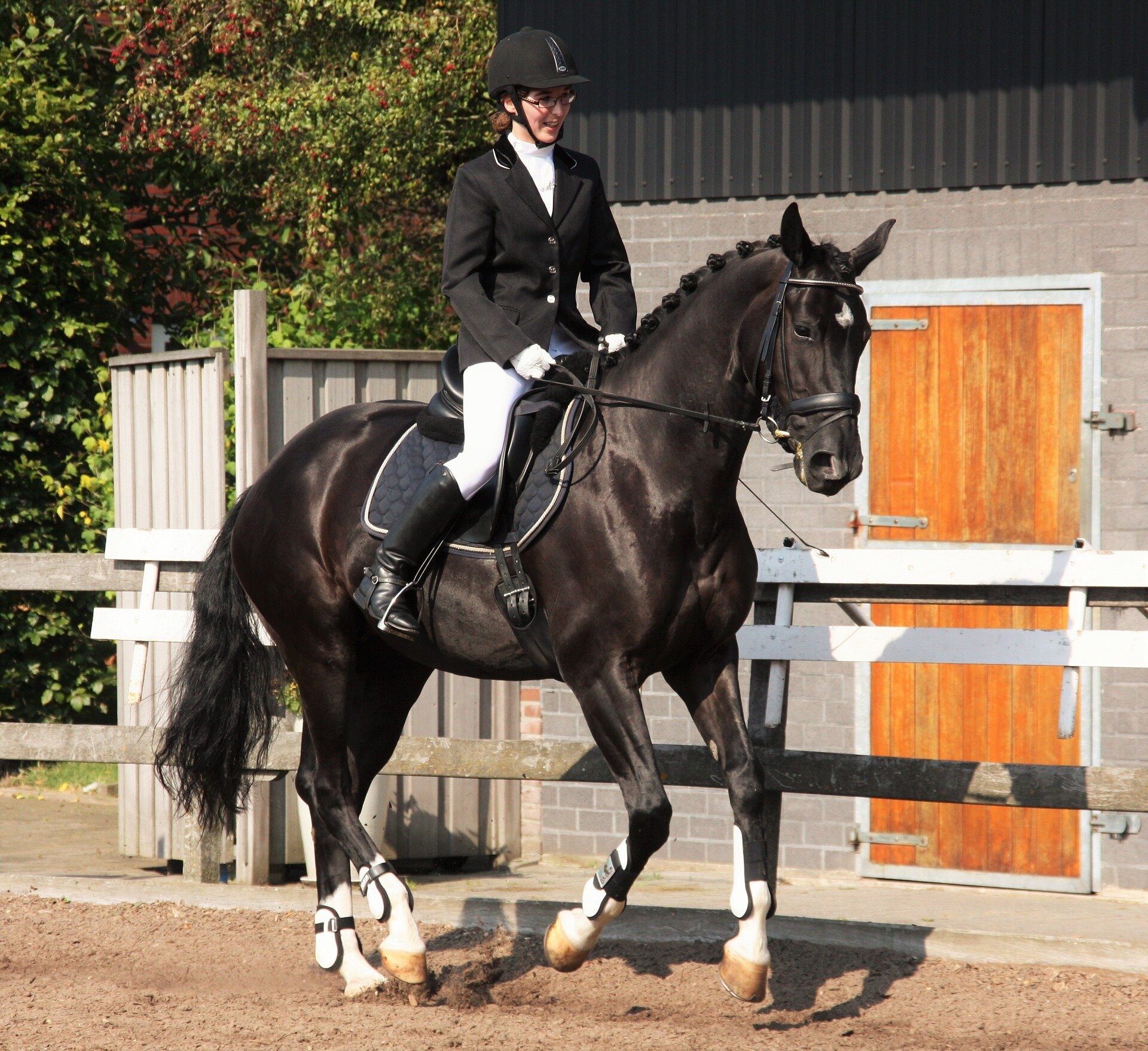



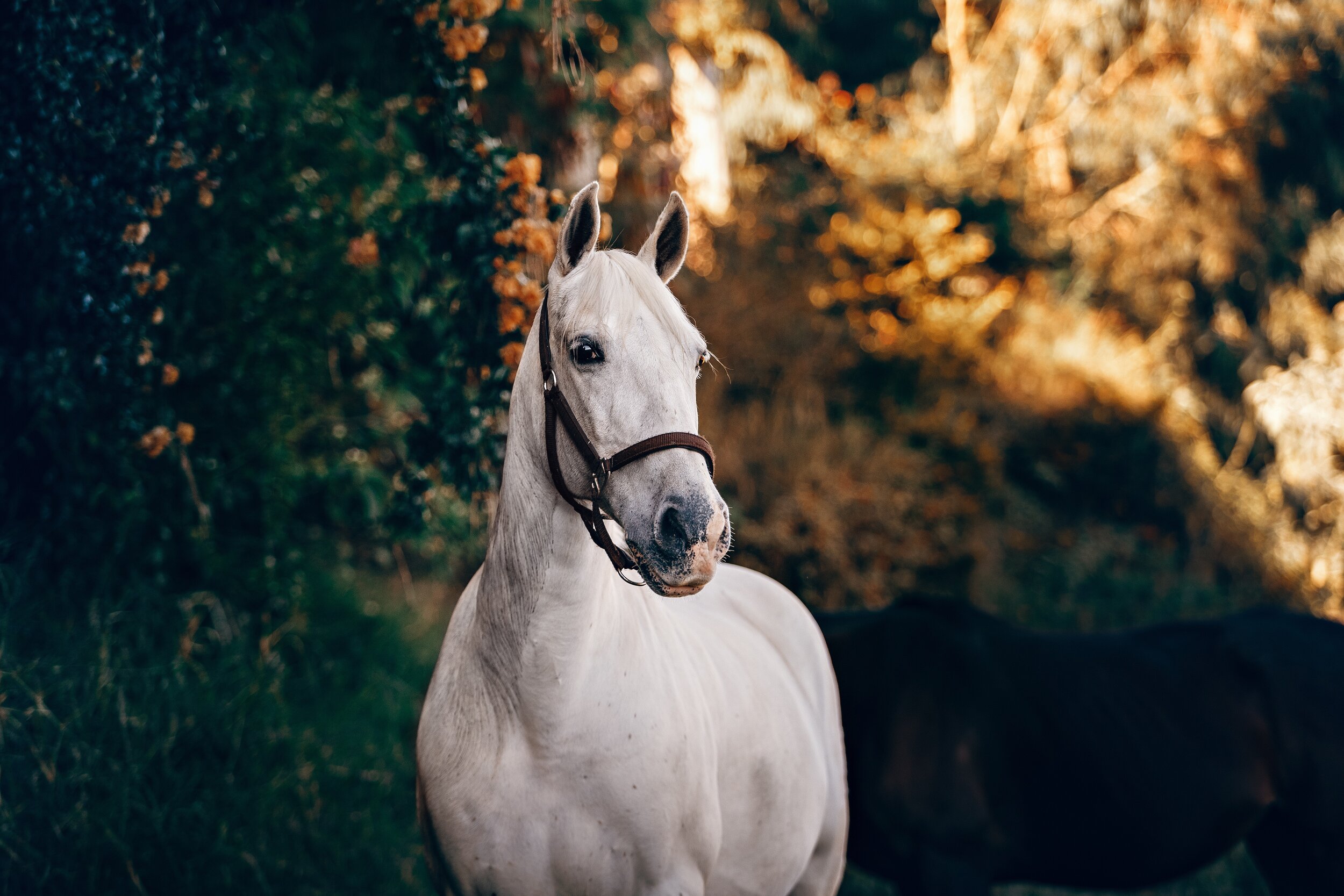











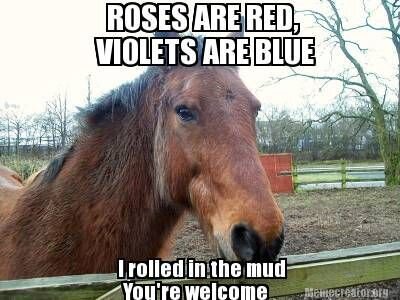

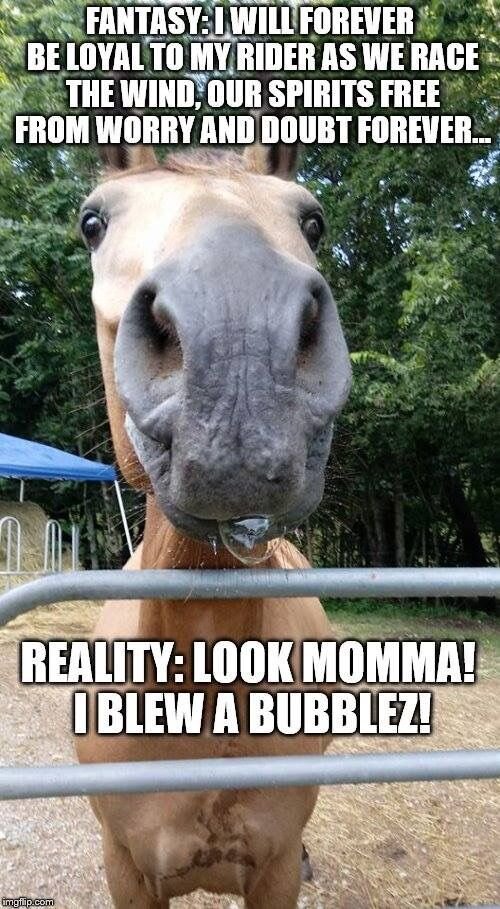



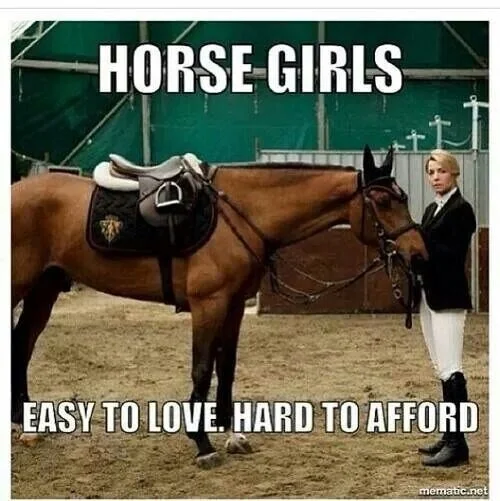


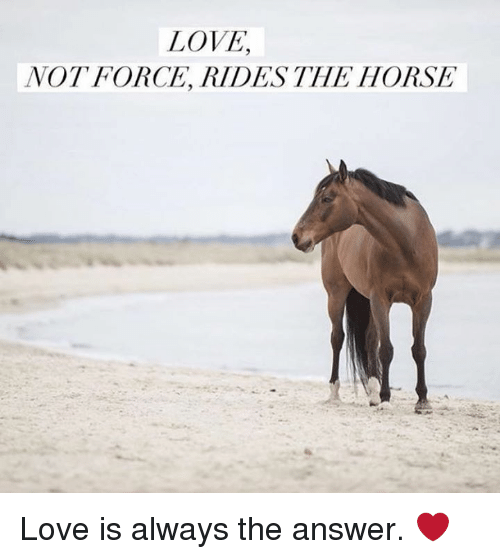


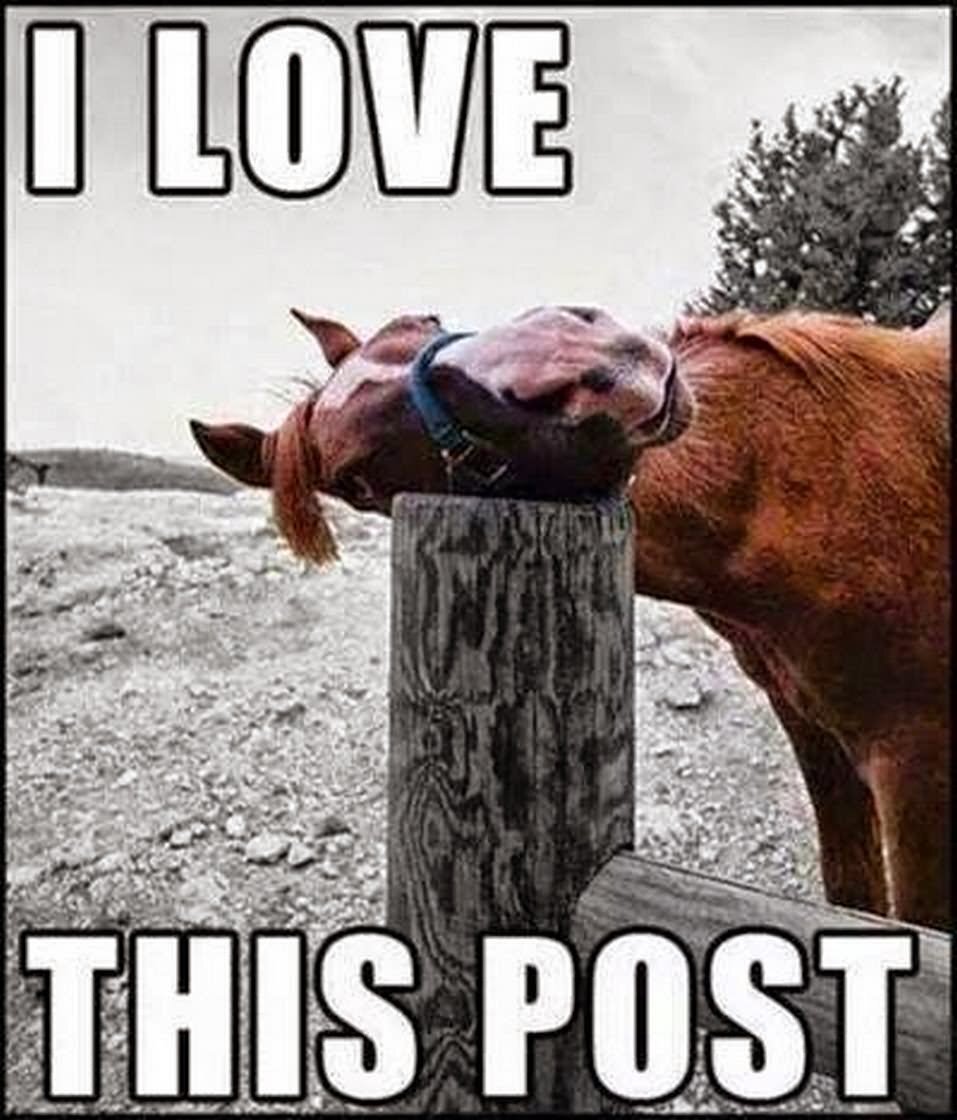







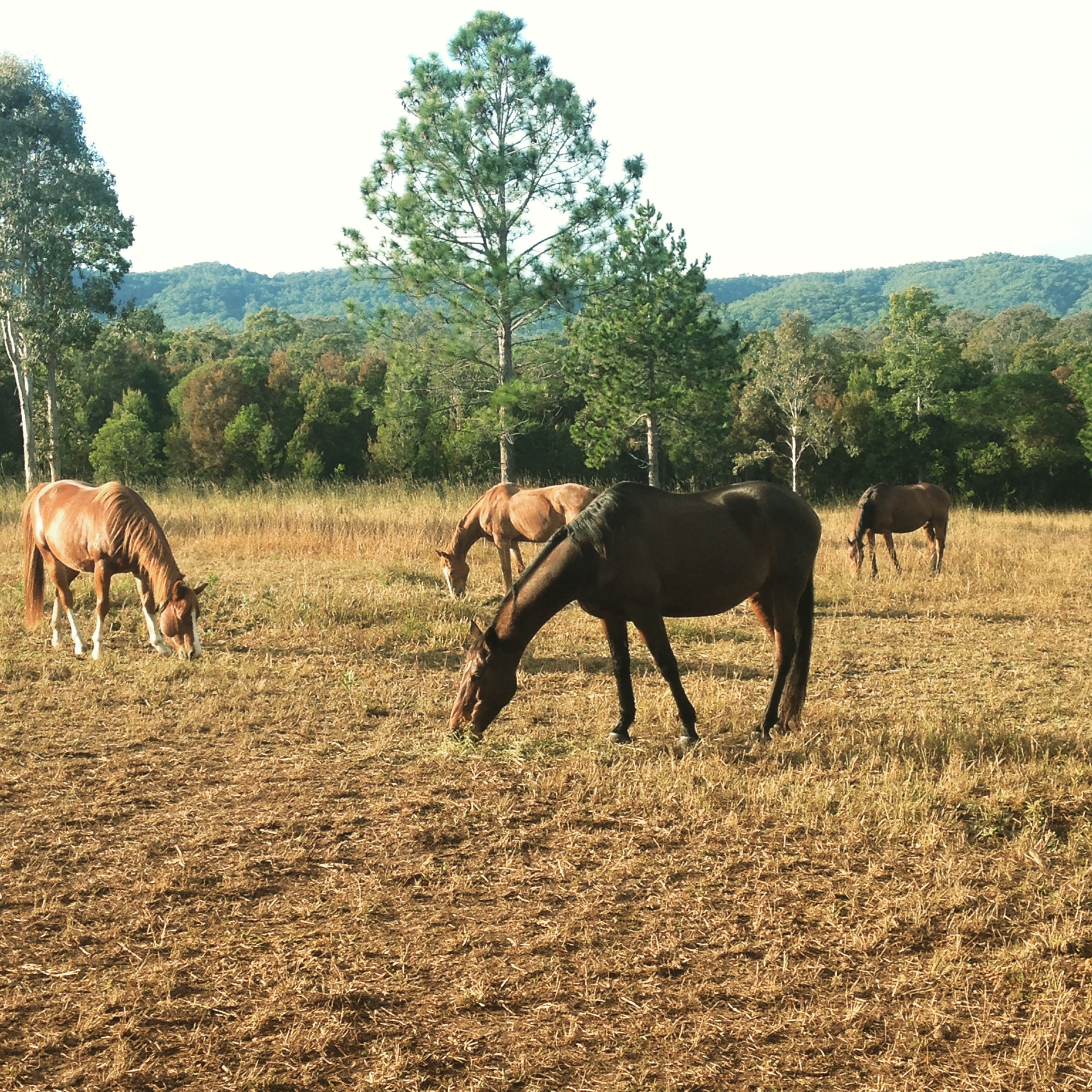
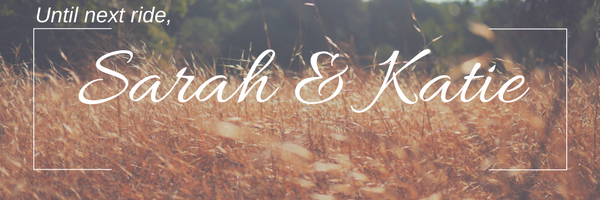



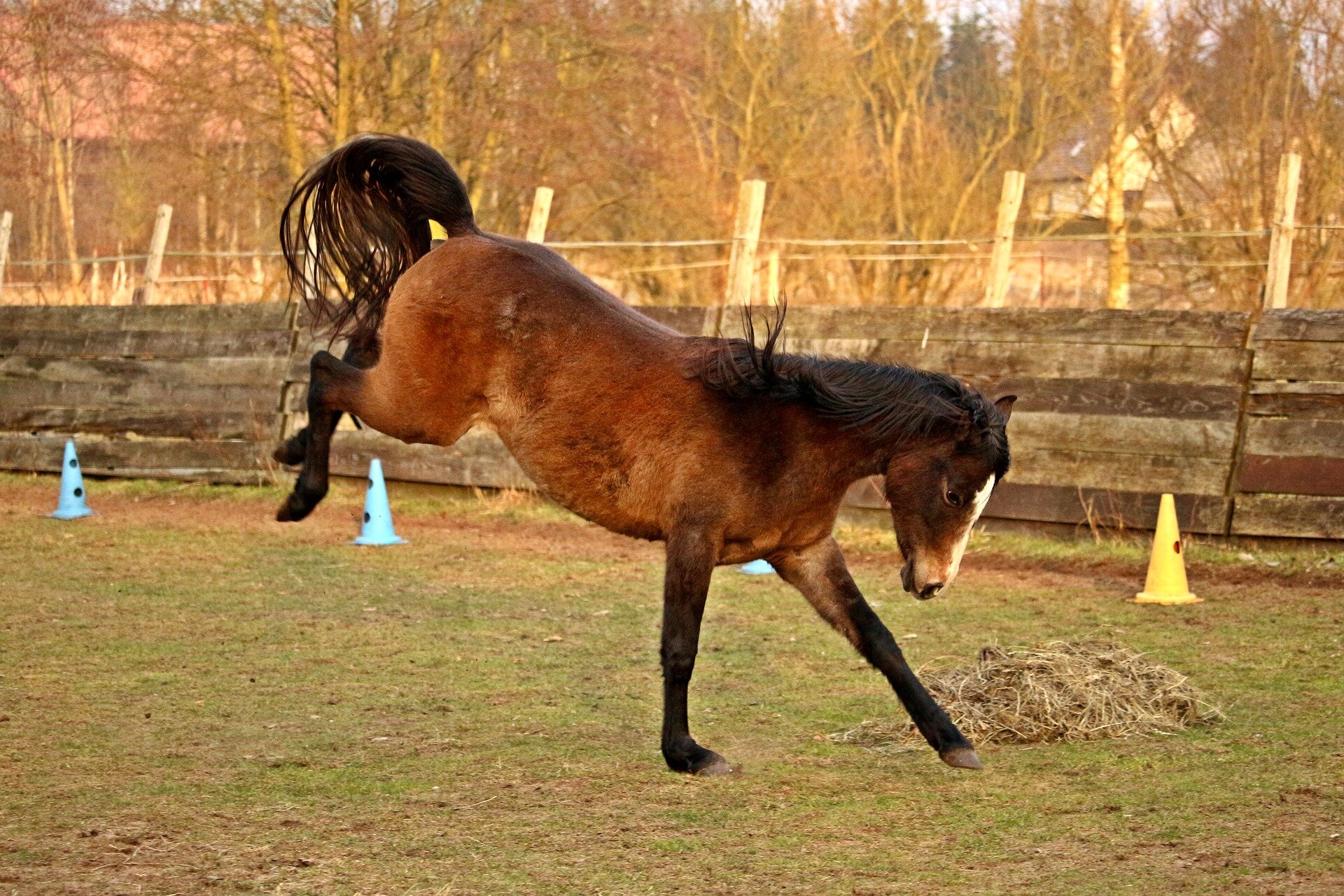
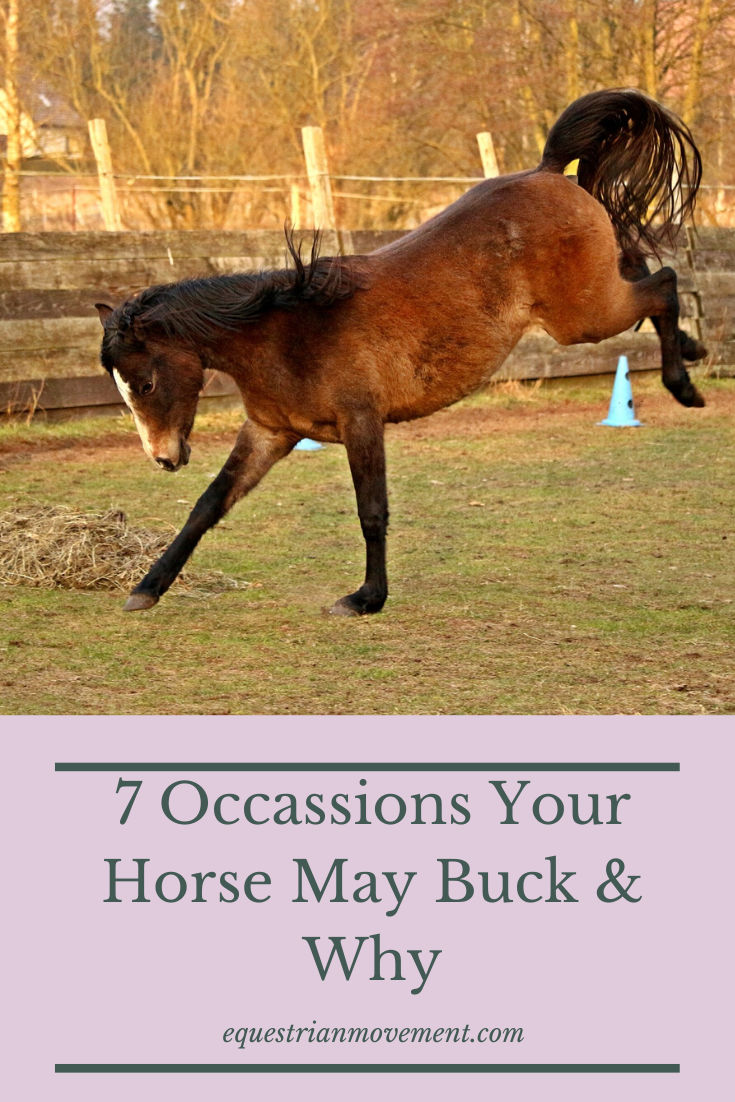







































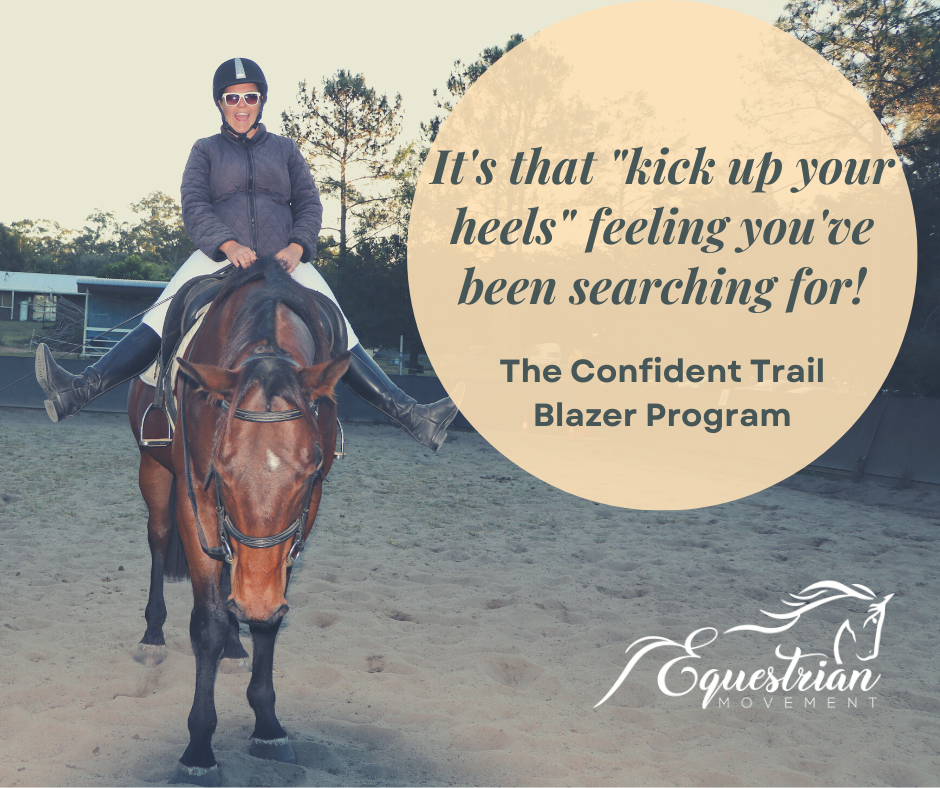

Save your seat at this free webinar